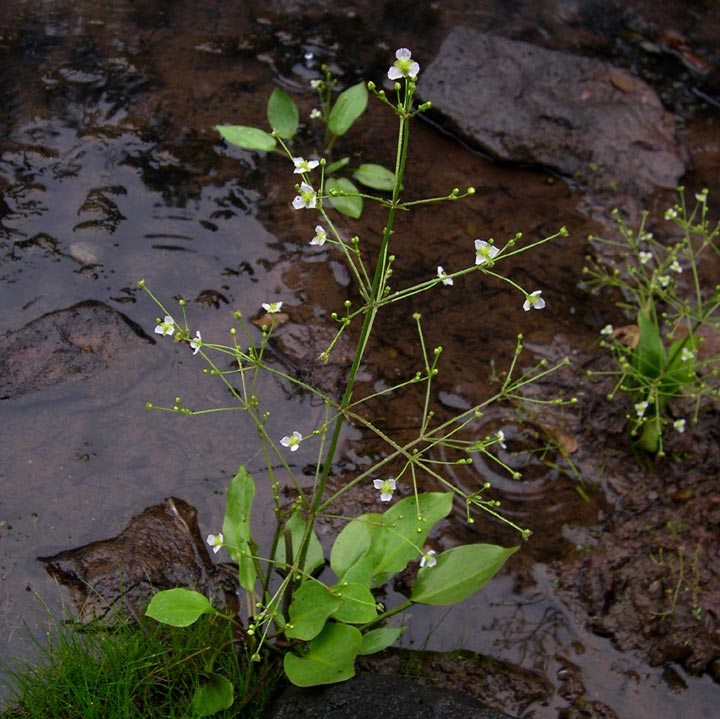Alisma
|
Family: Alismataceae |
Herbs, perennial, submersed, floating-leaved, emersed, glabrous; rhizomes often present; stolons absent; corms absent; tubers absent. Roots not septate. Leaves sessile or petiolate; petiole triangular; blade with translucent markings absent, linear to ovate, base attenuate to rounded, margins entire, apex obtuse to acute. Inflorescences panicles, of 2--10 whorls, erect, emersed, rarely submersed; bracts delicate, smooth, apex acuminate, surfaces smooth. Flowers bisexual; pedicels ascending; bracts subtending pedicels, lanceolate, shorter than pedicels, apex acuminate; receptacle flattened; sepals erect, not sculptured, herbaceous; petals pink or white, entire; stamens 6--9, filaments filiform, glabrous; pistils 15--20, in ring around margin of flattened receptacle, not radiating in starlike pattern, distinct; ovules 1; styles lateral. Fruits without longitudinal ribs, strongly laterally compressed, abaxial wings absent, lateral wings absent, abaxially 2--3-ribbed, abaxial keel absent, glands absent. x = 7. Much controversy surrounds the treatment of Alisma in North America. At present three distinct native species in North America are generally recognized (P. Rubtzoff 1964) as well as the probable occurrence of two introduced species, one in California and the other in Alaska.
Fls perfect; receptacle small, flat; sep 3, ovate to ovate-oblong, persistent; pet 3; stamens 6, the filaments equaling or longer than the anthers; pistils 10-28, in a single whorl; style lateral; achenes flattened but not winged, grooved on the curved back; infl ample, paniculate, the axis and larger branches bearing a whorl of pedicels or branches at each node; perennial; plants erect, or lax in deep-water forms; lvs never sagittate. 9, mainly N. Hemisphere. Gleason, Henry A. & Cronquist, Arthur J. 1991. Manual of vascular plants of northeastern United States and adjacent Canada. lxxv + 910 pp. ©The New York Botanical Garden. All rights reserved. Used by permission. |

